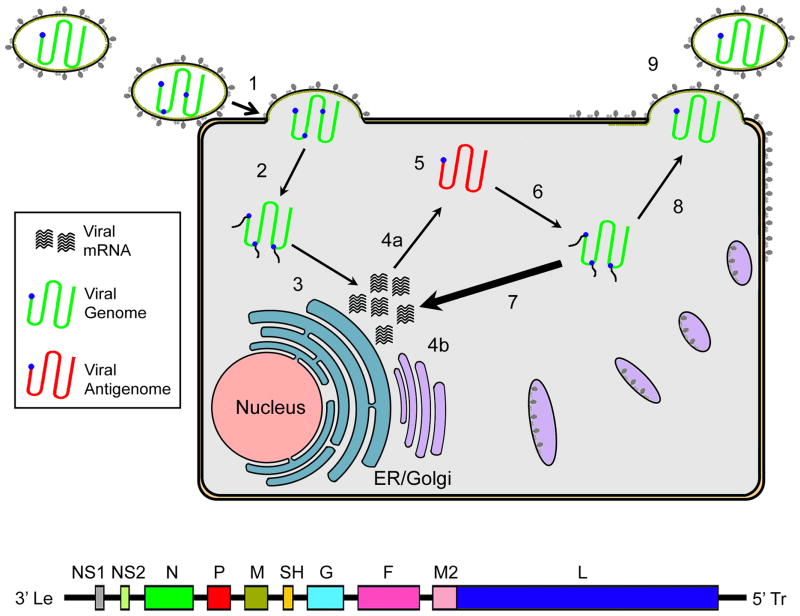Figure 1.
Schematic of the RSV life cycle. (1) Infection commences with viral attachment, fusion of the viral envelope with target membranes, and entry. (2) The viral nucleocapsid genome and RdRp complex are released into the cytoplasm. (3) Together with host factors, the RdRp complex begins primary transcription to synthesize viral mRNAs. (4) Viral proteins are synthesized, glycoproteins are transported to the plasma membrane through the host cell secretory system. (5) Switch of RdRp to replicase mode results in the production of full-length antigenomes of positive polarity. (6) Antigenomes then serve as templates for the creation of progeny genomic RNA. (7) Newly synthesized genomes template the majority of viral mRNAs through secondary transcription. (8) For particle assembly, progeny genomes with associated RdRp components are shuttled to budding sites at the plasma membrane. (9) Virion assembly. The virus entry machinery and the RdRp complex were identified as molecular targets of a large proportion of developmental drug candidates.

